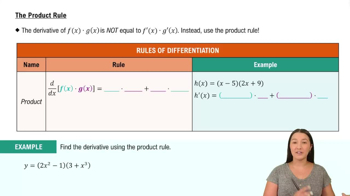Derivative Calculations
In Exercises 1–12, find the first and second derivatives.
y = x³/3 + x²/2 + x/4
 Verified step by step guidance
Verified step by step guidance Verified video answer for a similar problem:
Verified video answer for a similar problem:



 2:42m
2:42mMaster Higher Order Derivatives with a bite sized video explanation from Patrick
Start learning